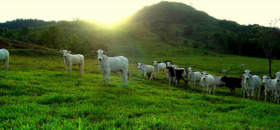Loan-loss provisions up at Farm Credit System
Aug 13, 2015

Continued low commodity prices are leading to higher loan-loss provisions and weaker earnings by the national Farm Credit System, a network of 80 financial cooperatives providing loans to agricultural and other rural borrowers.
The Federal Farm Credit Banks Funding Corp., which issues and markets debt securities to finance the System’s lending and operations, said in a FCS news release that a slight deterioration in credit quality among some loans to agribusiness firms also played a role in the $50 million provision for the six months ended June 30. The provision compared to a loan-loss reversal of $35 million for the comparable year-earlier period, the Farm Credit System said. Non-performing loans have increased $29 million to $1.766 billion since Dec. 31, 2014, though they are slightly lower than the $1.771 billion as of March 31.
Funding Corp. President and CEO Tracey McCabe said system earnings moderated in the first half, decreasing 2.9 percent to $2.273 billion in the six months ended June 30 (including a 4.6 percent drop for the second quarter). The reduced earnings also reflected the impact lower commodity prices have had on the agricultural sector, but McCabe added, “The System continues to grow its capital levels and is well positioned to meet credit stress that may arise from increasingly more volatile agricultural economic conditions.”
Indeed, the Farm Credit System’s allowance for loan and lease losses (ALLL) on June 30 was essentially the same as on Dec. 31, 2014. The ALLL as a percent of total loans was 0.56 percent on June 30 vs. 0.57 percent on Dec. 31. Many lenders have seen shrinking ALLLs since 2011 as credit quality has improved.
The Farm Credit System’s report is consistent with a survey of agricultural lenders earlier this year by the Kansas State University Department of Agricultural Economics. In that study, agricultural lenders reported increases in non-performing loans for the first time, as well as decreased farmland values. Also at the time, a university expert said that increases in non-performing loans simply reflected a market that is cycling back to a normal state.
Regardless of why non-performing loans have increased, adhering to prudent lending practices and regulatory guidance can help agricultural lenders manage losses, the Office of the Comptroller of the Currency, or OCC, has said. Especially given that farming has inherent uncertainty tied to prices and production, lenders should ensure they understand the operating environment, borrowers’ cash flow on a global basis, and their and ability to repay any loans, according to the OCC.
Risk management is especially important given that operating loans to farms seem to be surging at the same time farm income is dropping – a trend highlighted in a recent report by the Federal Reserve Bank of Kansas City. The Kansas City Fed noted, in findings from its national survey in May, that loan volumes for non-real estate farm loans in the second quarter had increased 5 percent from the second quarter of 2014. But operating loan volumes jumped 25 percent from a year ago and compared with an 18 percent decrease in loan volumes for all other non-real estate farm loans.
“In contrast to recent trends, loans to finance operating expenses accounted for the majority of large loans in the second quarter,” the Kansas City Fed said. “Although delinquency rates and charge-off rates on farm loans have remained relatively low, recent survey data point to slight increases in the potential for future risk in farm sector lending and generally weaker credit conditions.”
For advice on supporting a change in a financial institution’s ALLL reserve, download the free whitepaper, “How to Support a Change in Your ALLL Reserve.”
Image credit: Jose Roberto V Moraes via Flickr CC